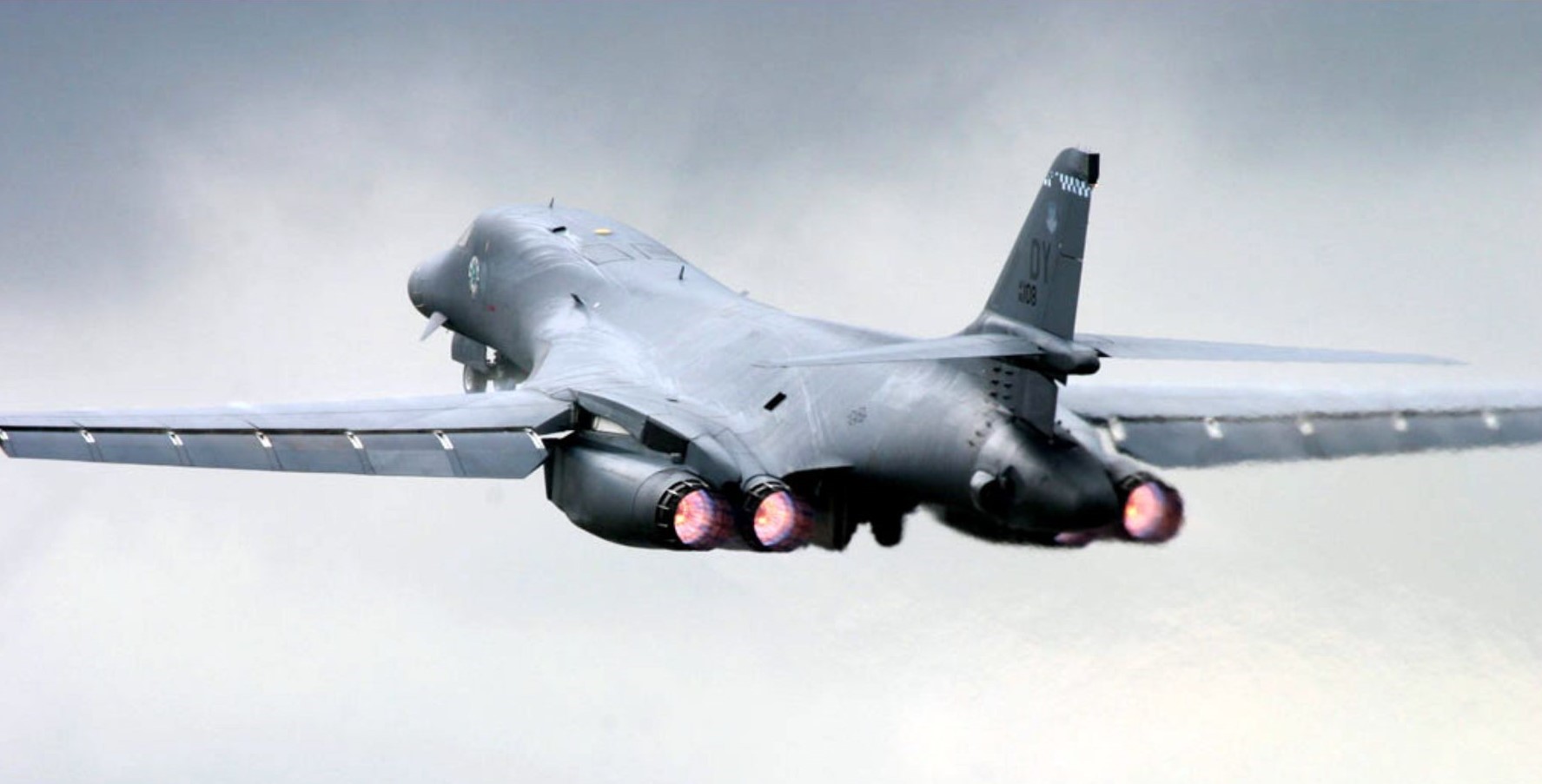The American Air Force’s supersonic B-1B Lancer bombers, often referred to as “Bones,” recently made headlines as they soared over a Romanian airbase in Eastern Europe, sending a clear message about the United States’ commitment to its NATO allies.
“Today’s Bomber Task Force mission serves as another testament to our unwavering dedication to Allies and partners, showcasing our collective capacity to strategize, execute, and synchronize seamlessly together,” said General James Hecker, USAFE Commander, in a statement.
In this article, we will delve into the recent activities of these formidable aircraft, stationed in the United Kingdom but playing a crucial role in fostering NATO unity and showcasing global readiness.

The B-1B Lancer: A Brief History
Before we delve into the recent developments, it’s essential to understand the origins and capabilities of the B-1B Lancer.
With its nickname “Bones” deriving from the phonetic name “B-One,” this renowned bomber is a strategic aircraft developed during the 1960s. Primarily to fill in this singular role, the US Air Force sought the B-1B Lancer to serve as both a watchdog over Soviet airspace and a means to transport nuclear weapons.
Rockwell International, later acquired by The Boeing Company, was its primary contractor of the B-1 program, with contributions from various other manufacturers. The journey from concept to reality was marked by numerous milestones, and in October 1986, the B-1B bombers were declared fully combat-ready. The last aircraft of this series rolled off the assembly line in 1988.
These bombers are unique not only for their historical significance but also for their distinctive design, featuring variable wing geometry, allowing for multiple angle settings to minimize air resistance and achieve high speeds over vast distances.
Incredible Capabilities of the Cold War-era Bomber
The B-1B Lancer is renowned for its remarkable capabilities, which make it a formidable asset in the American Air Force’s arsenal. Here’s a closer look at its key attributes:
Supersonic Speed. The B-1B Lancer is a supersonic bomber capable of achieving speeds exceeding 1.2 Mach, essential for rapidly reaching strategic locations and responding to potential threats.
High Altitude Operation. These bombers can reach altitudes of approximately 59,055 feet, allowing their pilots a significant advantage in terms of reconnaissance and evasion of enemy defenses.
Extended Range. The B-1B Lancer boasts a maximum range of close to 7,456 miles that allows it to conduct transcontinental missions, including those involving the transport of nuclear weapons.
B-1B Lancer in Eastern Europe
In recent times, these iconic B-1B Lancer bombers have garnered attention due to their deployment and demonstration in Eastern Europe.
● JUST IN | The US Army sent a B-1B long-range strategic bomber to Incirlik base in Turkey. Hit-top refueling of the B-1B warplane was carried out for the first time in Turkey on Tuesday.
Speaking to The Spot, a Petagon spokesperson said:
● Germany – U.S. Air Force B-1B… pic.twitter.com/pTxTylbgjQ
— The Spot (@Spotnewsth) October 31, 2023
This deployment, which took place in mid-October, saw the B-1B bombers stationed at the British RAF Fairford base near Bristol, directly under the command of the 9th Expeditionary Bomb Squadron.
While specific mission details and deployment objectives have not been disclosed to the public, it is speculated that their presence in the region may be linked to the NATO exercise “Steadfast Noon.”
The American Air Force’s choice to conduct a flyover at the Mihail Kogălniceanu (MK) airbase in Romania underscores the significance of this deployment and its message of solidarity and alliance.
General James Hecker, the Commander of US Air Forces in Europe (USAFE), emphasized the importance of this mission, stating that it signifies steadfast support and is a robust demonstration of shared values and mutual alliance that fosters NATO unity.
U.S. B-1B Lancers conduct vital Bomber Task Force mission in Eastern Europe – https://t.co/5v9nUu9CKG https://t.co/wfNqyk3bHn
— Air Force (@AirForce24x7) October 27, 2023
Implications and Significance
The deployment and demonstration of the B-1B Lancer bombers in Eastern Europe have several noteworthy implications and significance:
NATO Alliance. This event underscores the strong bond between the United States and its NATO allies. The presence of American military assets in Eastern Europe reassures these allies of the United States’ commitment to collective defense and security.
Deterrence. The B-1B Lancer’s high-speed capabilities and extended range serve as a powerful deterrence to potential adversaries. This display of force communicates that any aggression or threat will be met with a swift and decisive response.
Strategic Flexibility. The ability to rapidly deploy these bombers to any part of the world showcases the United States’ strategic flexibility. It demonstrates the country’s capability to address global threats and challenges promptly.
Military Enthusiasts and Veterans. For some military enthusiasts and American veterans, this event provides an opportunity to reflect on the enduring importance of the American military and the advanced technology that supports it. The B-1B Lancer’s continued relevance in modern defense strategies is a testament to its enduring value.
~
The deployment and demonstration of the B-1B Lancer bombers in Eastern Europe stand as a powerful symbol of unity and preparedness. It underscores the United States’ commitment to its NATO allies and serves as a reminder of the military’s formidable capabilities, particularly the advanced technology embodied by the B-1B Lancer.










COMMENTS
You must become a subscriber or login to view or post comments on this article.